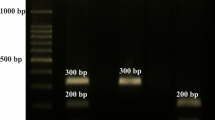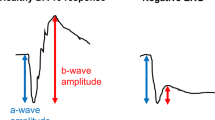Abstract
I HAVE described1 two groups of males with normal colour vision (diagnosed using the anomaloscope), but with two different “greenpoints”—that is, two different points on the spectrum at which they see pure green. Moving from the yellow–green side, the subject can tell where the yellow disappears and, moving from the other side, he can tell when the blue in the blue–green disappears. The two different groups of normal males have their green–points at 515 and 525 nm (nanometer = 10−9 m). I have described a technique which makes it possible to confirm this bimodal greenpoint and have assumed that it depends on two sex-linked normal mutants, which I called P and D. They should now be called G1 and G2 (see preceding communication). Three genotypes would be expected in females: G1/G1, G1/G2 and G2/G2; in fact, I found three phenotypes, G11, G12 and G22, a hypothetical G12 group giving intermediate reactions. This hypothesis of inheritance was confirmed in investigations of families (Tables 1 and 2 in ref. 1).
This is a preview of subscription content, access via your institution
Access options
Subscribe to this journal
Receive 51 print issues and online access
$199.00 per year
only $3.90 per issue
Buy this article
- Purchase on Springer Link
- Instant access to full article PDF
Prices may be subject to local taxes which are calculated during checkout
Similar content being viewed by others
References
Waaler, G. H. M., Nature, 215, 406 (1967).
Author information
Authors and Affiliations
Rights and permissions
About this article
Cite this article
WAALER, G. Heredity of Two Normal Types of Colour Vision. Nature 218, 688–689 (1968). https://doi.org/10.1038/218688a0
Received:
Issue Date:
DOI: https://doi.org/10.1038/218688a0
This article is cited by
-
Quantitative and objective diagnosis of color vision deficiencies based on steady-state visual evoked potentials
International Ophthalmology (2020)
-
Two Genetic Types of Normal Colour Vision?
Nature New Biology (1973)
Comments
By submitting a comment you agree to abide by our Terms and Community Guidelines. If you find something abusive or that does not comply with our terms or guidelines please flag it as inappropriate.



